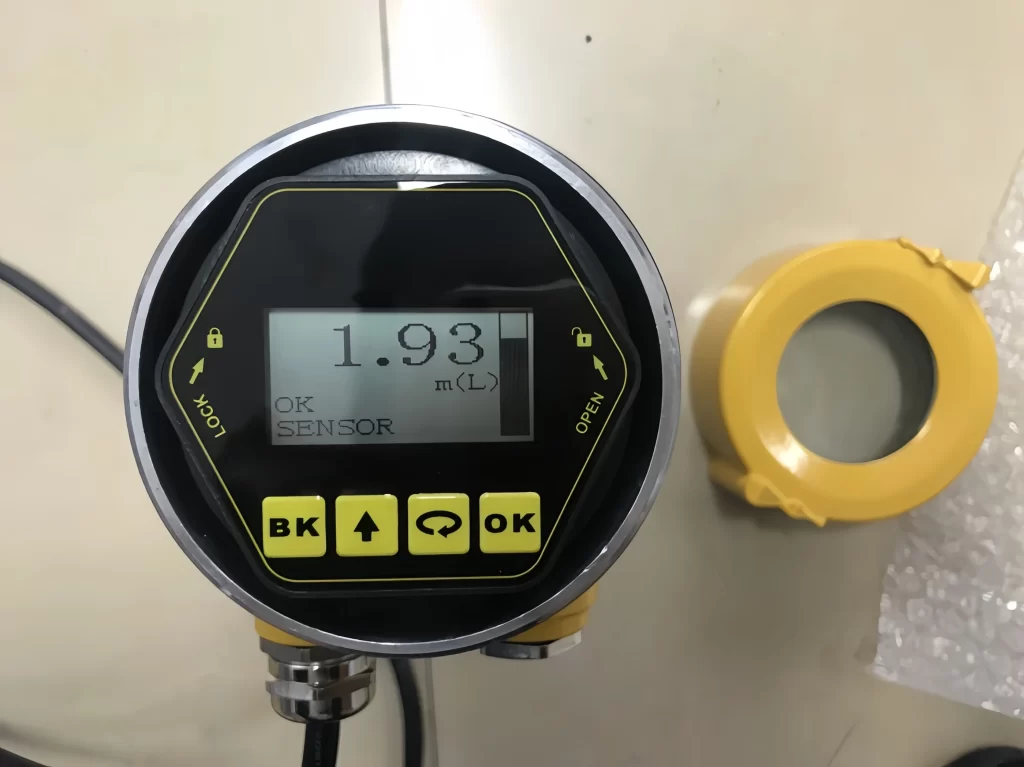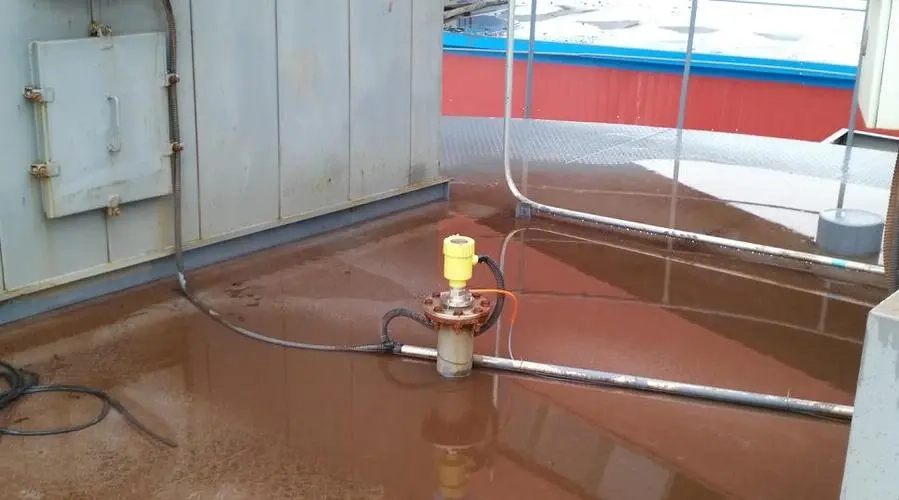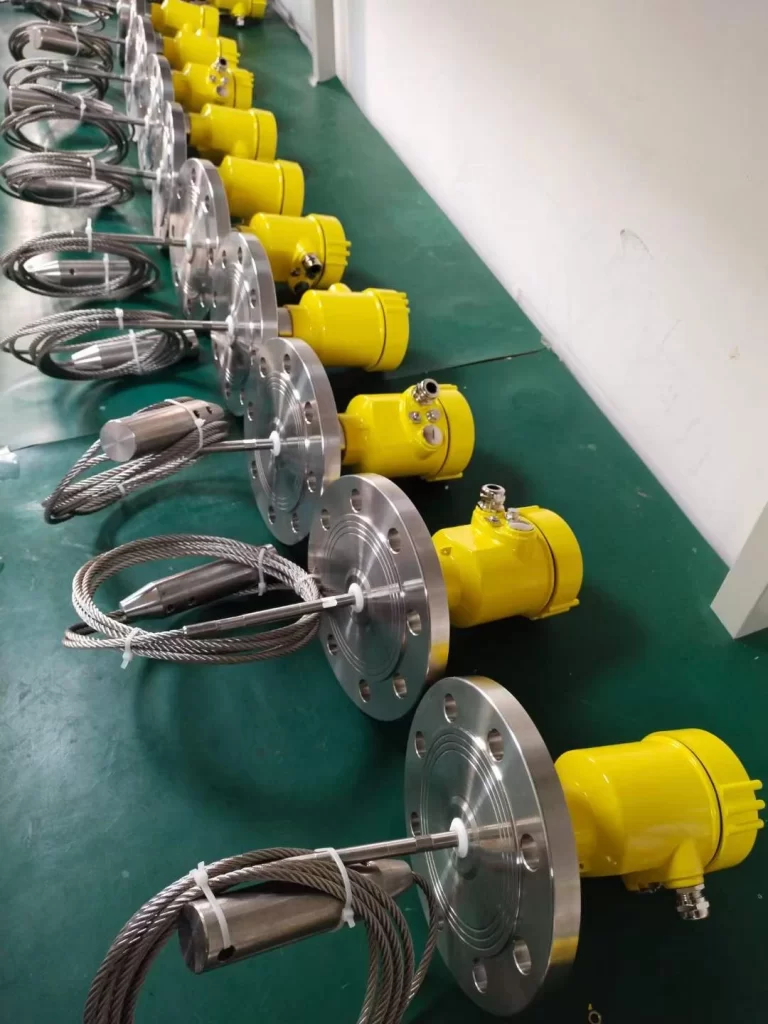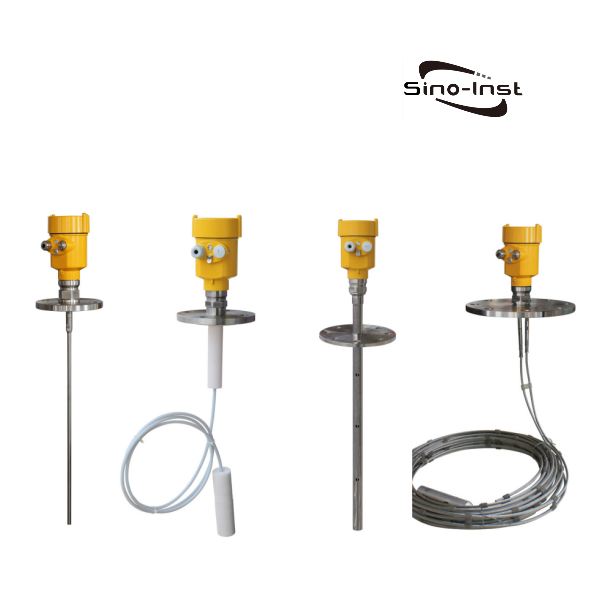
Guided Wave Radar (GWR) level transmitters are level-measuring devices based on the time travel principle. They are widely used in industrial settings for liquid and solid material level measurement. GWR Type Level Transmitters are appropriate for harsh environments such as high temperature, high pressure, vacuum, steam, high dust, and volatile gases.
This blog post investigates the working principles, types, characteristics, benefits, and representative applications of GWR type level transmitters, contributing an all-inclusive understanding for engineers, technicians, and procurement specialists.
Guided Wave Radar (GWR) Level Transmitters: The Principle in a nutshell
A GWR level measurement device uses radar pulses guided along a probe to measure the level of a substance (liquid, solid, slurry) within a tank or vessel.
Guided wave radar is based on microwave technology. Microwaves are only affected by materials that reflect energy which means that temperature variations, dust, pressure, and viscosity do not affect accuracy.
The high-frequency microwave pulses emitted by the guided wave radar propagate along the detection component (steel cable or steel rod). When encountering the measured medium, the dielectric constant changes suddenly, causing reflection. Part of the pulse energy is reflected back. The time interval between the transmitted pulse and the reflected pulse is proportional to the distance of the measured medium.
Features of GWR Level Transmitters
How Does a GWR Type Level Transmitter Work?
Here’s a step-by-step breakdown of its working:
- Pulse Generation: The transmitter generates low-power electromagnetic microwave pulses.
- Signal Propagation: These pulses travel along the guided wave probe inserted into the medium.
- Reflection Point: When the radar pulse hits the surface of the product (liquid or solid), part of the pulse is reflected back.
- Signal Reception: The transmitter receives the reflected pulse.
- Time Measurement: The time taken between transmission and reception is measured.
- Level Calculation: The transmitter calculates the level based on the signal’s time of flight and the known speed of microwave propagation.
The measured level can be converted into volume or mass depending on tank geometry and density.
GWR level transmitter dielectric constant
The GWR level transmitter in the market can measure nearly any liquid with a dielectric constant greater than 1.6.
But if the liquid medium is less than 1.6, what should we do if we need to use a guided wave radar radar level meter for liquid level measurement? At present, the most effective method is to install a wave-guide.
However, this method has certain limitations. That is, the dielectric constant of the liquid medium must be greater than 1.3, the viscosity should be less than or equal to 500cst, and it should not be prone to adhesion.

Types of GWR Type Level Transmitters
- Single Rod Probe (Rigid or Flexible): They are best for clean liquids with moderate dielectric constants. Common in water, fuel, or chemical applications.
- Coaxial Probe: Ideal for small tanks and challenging applications with foam or low dielectric media. Offers superior signal strength and minimal signal loss.
- Twin Rod Probe: Suitable for bulk solids and powders. Often used in tall silos or hoppers.
Applications of GWR Type Level Transmitters: Most Typical

- Oil and Gas
Interface measurement in separators.
Crude oil tanks.
Offshore drilling rigs. - Chemical and Petrochemical
Acid and alkali storage tanks.
Reactor vessels with high temperature and pressure. - Water and Wastewater Treatment
Reservoir level measurement.
Chemical dosing tanks.
Sludge and foam level detection. - Food and Beverage
Syrups, oils, and milk storage tanks.
Clean-in-place (CIP) systems. - Pharmaceutical
Fermentation vessels and hygienic tanks with stringent sanitary requirements. - Power Plants
Boiler feedwater tanks.
Condensate and coolant level monitoring. - Black liquor tanks.
Slurry and stock tanks.
Comparison with Other Level Measurement Technologies
| Application | Key Features | Limitations |
| GWR Type | Requires calibration and is influenced by dielectric constant | Slightly higher cost |
| Ultrasonic | Non-contact, cost-effective | Affected by foam, vapors, and temperature |
| Capacitance | Simple and low-cost | Requires calibration and is influenced by the dielectric constant |
| DP Transmitters | Common in pressurized vessels | Affected by fluid density changes |
| Float-based | Easy to understand | Mechanical wear and limited in dirty applications |
| Free-Space Radar | Ideal for large open tanks | More expensive and may struggle with turbulence |
More Level Measurement Solutions
- Single Point – Multi-Point Float Level Switches | Simple but Effective
- Different Solutions for Fluid Level Measurement
- Float Type Level Transmitters for Continuous Level Measurement
- All-inclusive Guide To Bin Level Measurement Systems
- Tank Level Measurement with Pressure Transmitters/DP Transmitters
- Hydrostatic Level Measurement-Liquid Level Measurement with Pressure Sensors
- Hydrostatic Level Measurement-Liquid Level Measurement with Pressure Sensors
Whether you are upgrading legacy level systems or designing a new plant, the level transmitter GWR type is a highly recommended pick for applications involving reliability, accuracy, and minimal maintenance.
Investing in GWR technology means investing in safety, efficiency, and long-term process performance.
We at Sino-Inst offer various types of Level transmitters. Including radar, guided wave radar, hydrostatic pressure, ultrasonic, capacitive, float, and other various measurement technologies. Level, interface, and volume measurement for basic, challenging, and extreme conditions in various industries.
Our sales team is always at the customer’s service, providing them with the best flow measurement solutions.
-1.jpg)
